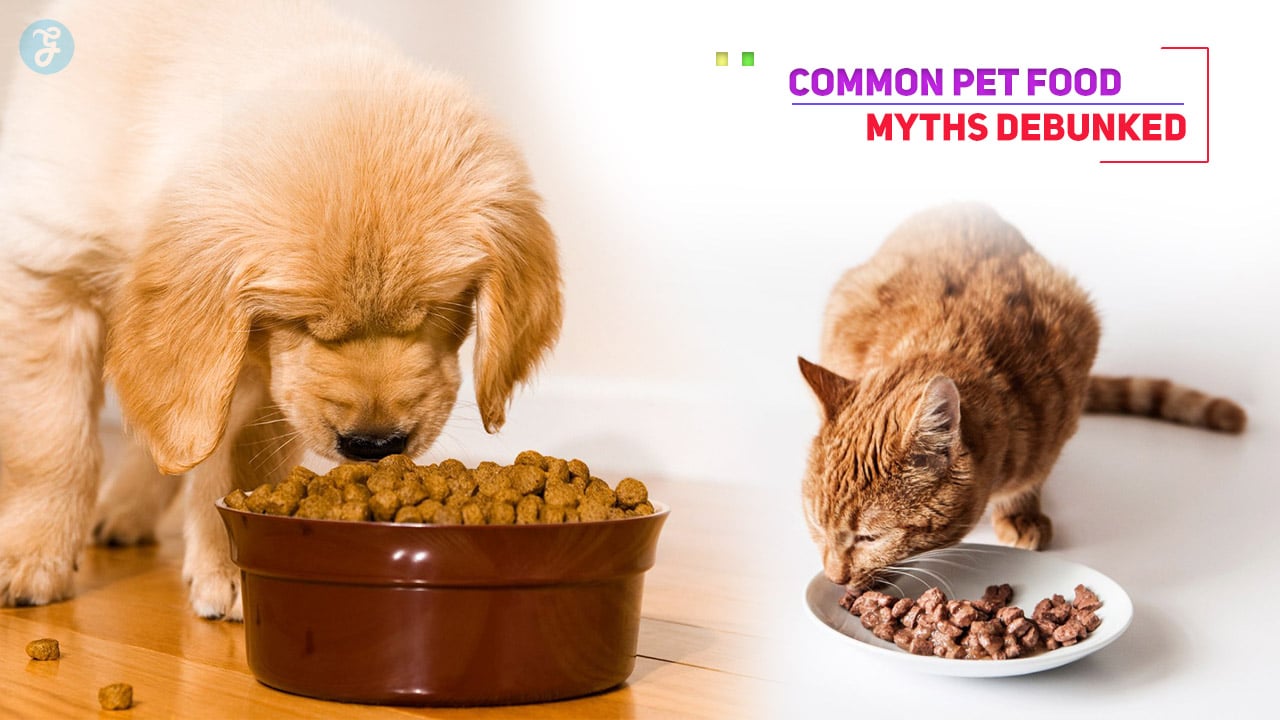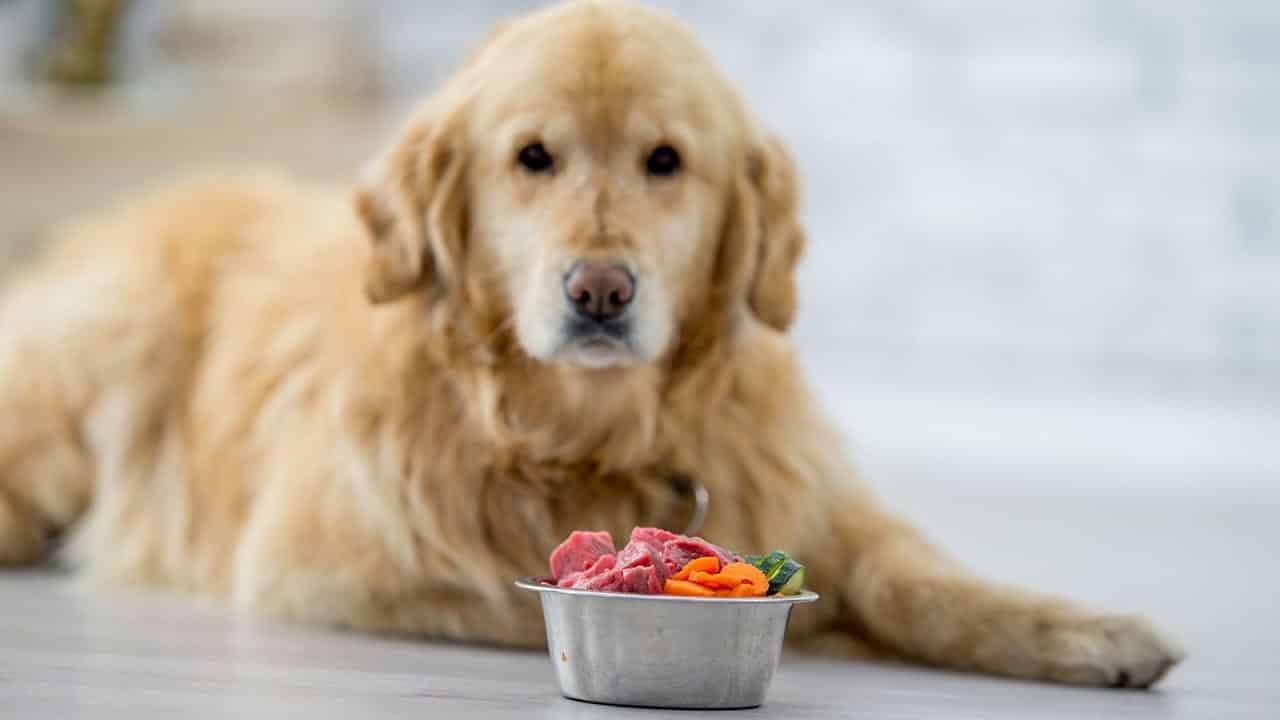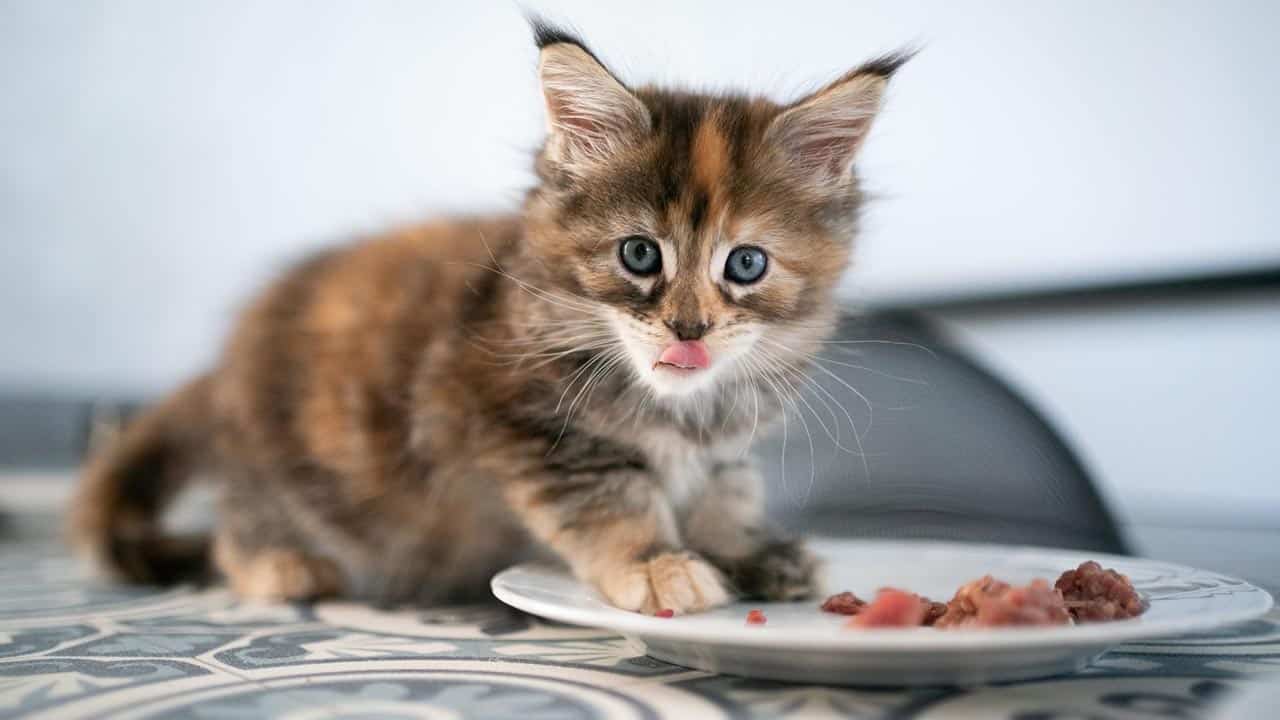Pet food myths can make choosing the right food for your furry friend confusing and overwhelming. With so many options, from dry kibble to grain-free and raw diets, and an overload of contradictory advice, it’s easy to feel lost.
However, understanding the science behind pet nutrition can help ensure your pet gets the healthiest diet possible.
Here, we debunk ten common myths about pet food to guide you in making more informed, balanced, and beneficial choices for your beloved companion.
10 Common Pet Food Myths
Let’s find out!
1. Myth: Grain-Free Diets Are Always Healthier for Pets
Grain-free pet food diets have gained popularity as many people believe grains are harmful to pets. However, this is a common misconception with limited evidence to support it.
The Reality
Grains like rice, barley, oats, and corn provide valuable nutrients, including fiber, protein, and essential fatty acids, which can be beneficial for both dogs and cats. While some pets do have grain allergies, these cases are relatively rare. More often, pets are allergic to specific animal proteins like chicken or beef rather than grains.
Why Grain-Free Isn’t Always Better
- Risk of Nutritional Deficiencies: Grain-free diets may lack certain nutrients, such as fiber and specific carbohydrates, which contribute to digestion and energy.
- FDA Investigation on Heart Disease: In 2018, the FDA began investigating a potential link between grain-free diets and dilated cardiomyopathy (DCM), a heart condition in dogs. This condition is believed to be associated with grain-free and legume-heavy diets.
Expert Recommendations
If your pet has no allergies to grains, there’s no need to avoid them entirely. Instead, focus on providing a balanced diet with a variety of nutrients. Always consult your veterinarian before switching to a grain-free diet, especially if your pet has specific health concerns.
2. Myth: Raw Diets Are the Best Choice for Natural Nutrition
Many pet owners believe that feeding raw food, also known as “biologically appropriate” food, is the most natural and beneficial diet for pets. However, raw diets come with significant risks that are often overlooked.
The Reality
Raw food diets involve feeding pets uncooked meats, organs, and sometimes bones, with the belief that this replicates what their wild ancestors ate. While some pets thrive on raw diets, it can expose both pets and their owners to harmful bacteria like Salmonella and E. coli, which can lead to serious health risks.
Risks of Feeding a Raw Diet
- Bacterial Contamination: Raw diets can carry bacteria that affect pets and can transfer to humans, increasing the risk of zoonotic diseases.
- Nutritional Imbalance: Many homemade raw diets lack essential nutrients, such as calcium and certain vitamins, leading to long-term deficiencies.
- Bone Hazards: Raw bones may splinter and cause choking, digestive obstructions, or internal injuries.
Expert Recommendations
If you’re considering a raw diet, speak to a veterinarian or pet nutritionist who can help you balance the diet safely. Commercial raw diets are often nutritionally complete and undergo minimal processing, which reduces bacterial risks.
3. Myth: High-Protein Diets Cause Kidney Damage in Pets
This myth often leads pet owners to worry that high-protein diets can harm their pet’s kidneys, especially in older animals. But protein is crucial for pets’ health, and the real story is more nuanced.
The Reality
The belief that high-protein diets lead to kidney damage originates from outdated studies on rodents, not pets. Research on dogs and cats has shown that high-protein diets do not directly cause kidney issues. In fact, protein is an essential macronutrient for building muscles, maintaining healthy skin, and supporting energy levels.
Understanding Kidney Health and Protein
- Senior Pets and Protein: Older pets with pre-existing kidney conditions may require protein adjustments, but healthy senior pets benefit from adequate protein.
- Balanced Protein Intake: Quality of protein matters. High-quality animal proteins are easier for pets to digest and can help reduce kidney strain.
Expert Recommendations
Provide pets with a diet containing quality protein sources, and consult a vet if your pet has kidney issues. For healthy pets, balanced protein levels are important for overall health and longevity.
4. Myth: Homemade Pet Food Is Always Healthier Than Commercial Food
Some pet owners believe that making homemade pet food is healthier and safer than buying commercial pet food. However, homemade diets can have risks, especially if they’re not nutritionally balanced.
The Reality
Although homemade diets offer control over ingredients, they often lack essential nutrients or have imbalanced proportions of vitamins, minerals, and macronutrients. Pet owners may unintentionally miss essential nutrients like taurine (critical for cats), calcium, or specific amino acids.
Risks of Homemade Diets
- Nutritional Deficiencies: Homemade recipes often miss key nutrients unless they are formulated by a veterinary nutritionist.
- Time-Consuming Preparation: Properly preparing and balancing homemade food can be labor-intensive and costly.
- Inaccurate Information: Many online recipes are untested or lack scientific basis, potentially harming pets.
Expert Recommendations
If you prefer a homemade diet, consult a pet nutritionist or vet who can help create a balanced plan. Many veterinarians recommend supplementing homemade diets with vet-approved pet food to ensure nutritional completeness.
5. Myth: By-Products Are Low-Quality and Unsafe for Pets
Pet food by-products often have a bad reputation among pet owners, with many believing they’re low-quality fillers or harmful for their pets.
The Reality
By-products are nutrient-rich parts of animals, including organs (like liver and kidneys), that are safe and beneficial. While some by-products are undesirable (such as feathers and beaks), quality commercial pet foods do not contain these, and many by-products are great sources of vitamins, minerals, and protein.
Benefits of High-Quality By-Products
- Nutritional Value: Organ meats are packed with essential nutrients, like iron, vitamins A and B12, and fatty acids.
- Cost-Effective Nutrition: By-products help keep pet food affordable while providing high-quality nutrition.
Expert Recommendations
Don’t dismiss pet foods with by-products. Instead, look for pet foods that specify the source and quality of their ingredients, as reputable brands ensure these by-products are safe and nutritious for pets.
6. Myth: Pets Should Eat the Same Food as Humans
Many pet owners believe that if a food is safe for humans, it must be safe for pets too. However, pets have different nutritional needs and metabolisms, making some human foods dangerous for them.
The Reality
While sharing food with pets is tempting, foods like chocolate, onions, garlic, grapes, and certain artificial sweeteners (such as xylitol) are toxic to dogs and cats. Additionally, human foods often lack the balanced nutrients that pet-specific diets provide.
Dangers of Feeding Pets Human Food
- Toxic Ingredients: Many common ingredients in human food are dangerous for pets and can lead to poisoning.
- Imbalanced Nutrition: Human food doesn’t always meet pets’ dietary needs, potentially leading to malnutrition over time.
- Weight Gain: Feeding pets from the table often contributes to overeating and obesity.
Expert Recommendations
Limit treats from the table and provide a balanced pet food formulated for their species. If you’d like to treat your pet, choose vet-approved snacks or foods specifically designed for them.
7. Myth: Wet Food Is Better Than Dry Food
Pet owners often wonder whether wet or dry food is better, with many believing wet food is more natural and beneficial for their pets.
The Reality
Both wet and dry food have advantages and disadvantages. Wet food has higher moisture content, which benefits pets who need additional hydration. However, dry food is more convenient, less messy, and can be beneficial for pets’ dental health by reducing plaque buildup.
Comparing Wet and Dry Food
- Hydration: Wet food is ideal for pets who need extra hydration, like those with urinary or kidney issues.
- Dental Health: Dry kibble can help reduce tartar buildup, although it doesn’t replace regular dental care.
- Weight Management: Some wet foods have higher fat content, which may not be ideal for overweight pets.
Expert Recommendations
Consult your veterinarian to determine the right balance for your pet. Often, a mix of both wet and dry food can provide the best of both worlds, ensuring hydration and dental health while satisfying nutritional needs.
8. Myth: Cats and Dogs Can Eat the Same Food
Some people assume that cats and dogs can share food since they are both carnivores. However, their dietary needs differ significantly, and feeding them the same food can be harmful.
The Reality
Cats are obligate carnivores, meaning they require nutrients found primarily in animal-based proteins, such as taurine and arachidonic acid. Dogs are omnivores and have more flexible diets, so dog food doesn’t contain the specific nutrients that cats need to thrive.
Key Differences Between Cat and Dog Food
- Taurine: Cats need taurine, which is not present in dog food. Without taurine, cats can develop heart and vision issues.
- Protein Needs: Cats need higher protein content than dogs.
- Vitamin A and D Requirements: Cats need more preformed vitamin A, which is present in animal sources, than dogs.
Expert Recommendations
Always feed pets food specifically designed for their species. Dog food is not suitable for cats, and cat food does not meet all of a dog’s nutritional needs.
9. Myth: Organic and Natural Labels Mean Better Quality
Many pet owners assume that “organic” or “natural” labeled pet foods are inherently better or safer. However, these terms can be misleading in the pet food industry.
The Reality
Although “organic” pet food means it follows certain agricultural standards, it does not necessarily mean the food is more nutritionally complete. “Natural” can refer to the absence of artificial flavors and preservatives but does not guarantee that the food contains the right balance of nutrients.
Understanding Labels
- Organic: Organic pet foods are free from synthetic pesticides and fertilizers, but they may still lack essential nutrients if not properly formulated.
- Natural: Natural pet foods avoid artificial ingredients but should still be checked for nutritional completeness.
Expert Recommendations
Don’t rely solely on organic or natural labels; check the nutritional information and consult with your vet to ensure the food meets your pet’s dietary needs.
10. Myth: Changing Pet Food Brands Frequently is Unhealthy
Some pet owners believe that once they find a food their pet enjoys, they should stick to it forever to avoid digestive issues. While consistency is important, rotating food occasionally can be beneficial.
The Reality
Switching food brands, especially within the same type of food, can introduce variety and ensure a broader range of nutrients. However, abrupt changes can lead to digestive upset, so transitions should be gradual.
Benefits of Rotating Pet Foods
- Nutritional Variety: Rotating foods provides a wider range of nutrients that can benefit your pet.
- Reduces Boredom: Just like humans, pets may appreciate variety in their diet.
- Prevents Food Sensitivities: Switching foods occasionally can reduce the likelihood of food sensitivities over time.
Expert Recommendations
Gradually transition between brands and flavors, mixing small amounts of new food with the old to avoid stomach upset. Consult with your veterinarian about the best approach for rotating your pet’s diet.
Takeaway
The world of pet nutrition is filled with myths that can confuse pet owners. From grain-free misconceptions to misunderstandings about protein, these myths can lead people to make choices that may not align with their pets’ true dietary needs.
By understanding the facts behind each of these myths, you’re better equipped to make informed decisions that support your pet’s health, happiness, and longevity.
Ensuring your pet receives a balanced diet involves more than just following trends; it requires knowledge and consultation with veterinary professionals.
Armed with the right information, you can confidently choose a diet that’s best suited for your furry companion, keeping them healthy, active, and by your side for years to come.







































